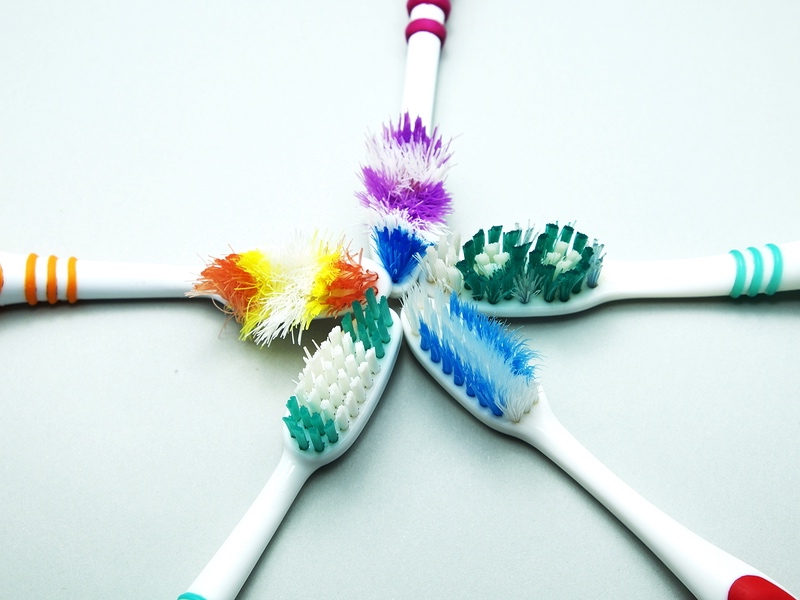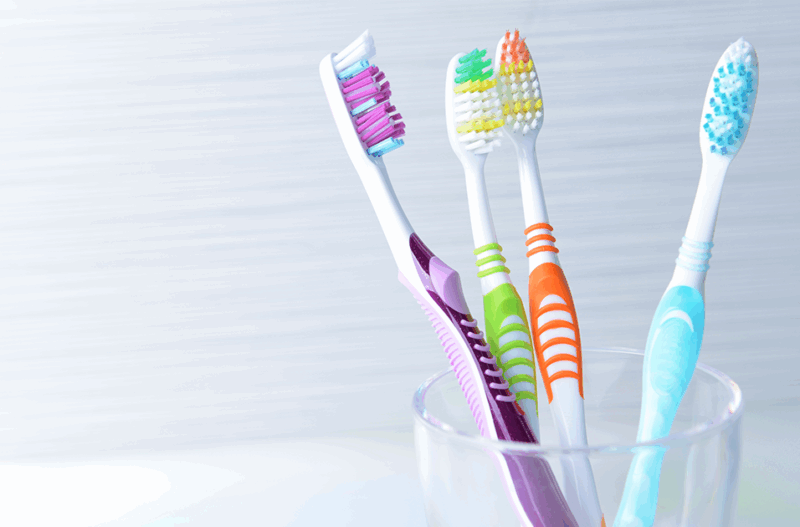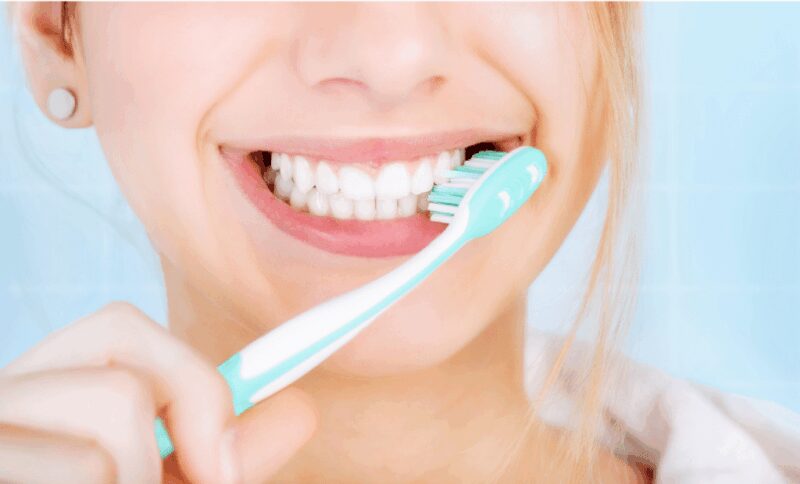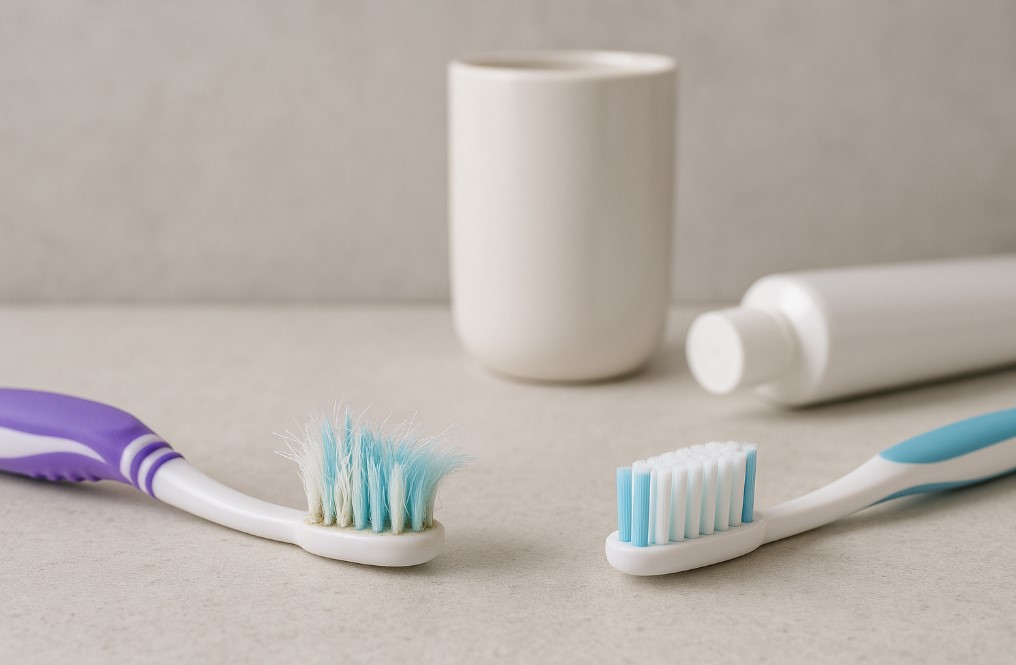We all know we should brush our teeth twice a day. But far fewer people think about the toothbrush and how often we should replace it. Your toothbrush might look clean, even after months of use—but that doesn’t mean it’s doing its job properly. Over time, bristles lose their shape, bacteria build up, and your daily routine could actually start causing more harm than good.
In this guide, we’ll get into the details of how often you should replace your toothbrush (spoiler: it’s probably more often than you think), why it matters for gum and tooth health, and what to look for to know when it’s time to toss the old brush.
Why Replacing Your Toothbrush Is More Important Than You Realize

Too often, a toothbrush becomes just another fixture on the bathroom counter—used daily, but rarely replaced on time. The problem is, toothbrushes have a limited lifespan. As the bristles wear down and lose their shape, they stop cleaning effectively—especially around the gumline and between teeth, where plaque builds up most easily.
When that plaque isn’t removed properly, it can lead to gum irritation, bleeding, and early signs of gingivitis. But it doesn’t stop there. Old toothbrushes, especially those stored in damp environments, can collect bacteria, mold, and even yeast.
Even if you’re brushing regularly, using a worn-out toothbrush means you’re not actually getting the clean you think you are. If you want to maintain long-term oral health—not just fresh breath or whiter teeth—it all starts with the basics. Regular check-ins with professionals like The Dental Team can help reinforce good habits and ensure your daily routine is actually protecting your gums and enamel. They combine aesthetic treatments with practical, preventive care.
The General Rule: Every 3 to 4 Months
The American Dental Association recommends changing your toothbrush—or the head, if you’re using an electric model—every three to four months. That’s generally how long it takes for bristles to wear down and become less effective. But that timeline isn’t set in stone for everyone.
If you notice signs of wear before that, it’s time to swap:
- Bristles are splayed or frayed, even slightly
- The brush feels less stiff or doesn’t bounce back after use
- You brush aggressively, causing faster bristle breakdown
- Your child chews on the brush head (a common issue with kids)
Other factors that may require early replacement:
- You’ve recently been sick with a cold, flu, or strep throat
- You store your brush in a shared space, increasing germ exposure
- Your brush was kept in a damp or enclosed holder, allowing bacteria to grow
And don’t overlook this detail with electric toothbrushes:
Their smaller, high-vibration heads wear out faster. Most manufacturers suggest replacing electric brush heads every 10 to 12 weeks—sometimes even sooner if you brush frequently or notice wear.
Fancy Brushes and Subscription Services?
A lot of modern oral care brands now offer toothbrush subscription models, sending you a new brush or brush head every few months. If you’re the kind of person who loses track of time (or can’t remember the last time you changed brushes), this might be a helpful way to automate your routine.
Subscription services aren’t mandatory, of course, but the idea behind them is sound: consistency matters more than brand. Even the most expensive toothbrush won’t help if it’s worn out or used beyond its intended lifespan.
Why Gums Suffer When Brushes Wear Out

Gums are sensitive tissue—and they’re the first to show signs when your brushing habits aren’t quite right. Brushing with old, splayed bristles may feel the same, but it’s much less effective at cleaning along the gumline. That leftover plaque becomes a breeding ground for bacteria, leading to early signs of gingivitis: red, swollen, or bleeding gums.
Let this go on too long, and you risk periodontitis—a more serious stage of gum disease that can result in bone loss and eventually, tooth loss.
On the flip side, overly firm or worn bristles can also damage the gumline by creating microtears or causing gums to recede. This is especially common among those who brush aggressively or use medium- to hard-bristled brushes, which aren’t recommended by most dental professionals.
To protect your gums, soft bristles in good condition are ideal—and that means replacing your toothbrush before those bristles turn into a frayed mess.
Brush Care: What You’re Probably Doing Wrong

A good brush can only do its job if you take care of it properly. Yet most people are guilty of at least one toothbrush storage mistake:
- Storing it in a closed container or drawer – This traps moisture and encourages bacteria and mold.
- Letting brushes touch – If your brush shares a holder with family members, cross-contamination is possible.
- Not letting it dry completely – Damp bristles breed germs, especially in bathrooms without good ventilation.
Even if you’re brushing correctly, using the right toothpaste, and flossing daily, poor brush hygiene could sabotage your oral health efforts. Store your brush upright, separate from others, and in a way that allows air to circulate around the bristles.
If you’re using a travel cap, make sure it’s only for transport—don’t leave it on between uses.
Children’s Toothbrushes: Replace More Often
Kids are notorious for chewing on their toothbrushes. This means their bristles often get bent, mashed, or even broken in just a few weeks. For toddlers and young kids, a visual inspection is the best method: if the bristles aren’t pointing straight, or the brush looks chewed, it’s time for a new one—regardless of the calendar.
Another thing to remember: younger children may not have great brushing technique. They might not brush evenly or thoroughly, so the brush wears unevenly or faster on one side. Make it a habit to check their brush regularly, and replace it every one to two months if needed.
Getting your child used to frequent toothbrush swaps also helps set up lifelong hygiene habits that can stick with them into adulthood.
Signs You Should Replace Your Toothbrush Immediately
ഈ പോസ്റ്റ് Instagram-ൽ കാണുക
Sometimes, you don’t need a calendar reminder. Your toothbrush will show signs it’s ready to retire:
- Bristles are visibly frayed or pointing in multiple directions.
- You notice plaque or residue even after brushing.
- Your gums are more sensitive or sore than usual.
- You’ve been sick with anything from a sore throat to the flu.
- The brush smells musty or feels sticky after rinsing.
- It’s been in a closed, damp environment (like a travel bag).
If you hit any of the above, just swap it out. No point taking chances when a replacement costs just a few bucks.
Make Brush Replacement Part of Your Routine

Brushing your teeth is one of the most routine habits in your life. But if the brush you’re using is past its prime, you’re only getting half the benefit. Worse—you might actually be damaging your gums and missing harmful buildup.
Make it simple. Replace your brush every three months. Set a reminder in your phone or line it up with the seasons—new brush with every weather change. If you’re unsure, trust your eyes: if the bristles aren’t straight and springy, it’s time for a new one.
Healthy gums and teeth aren’t just about technique or toothpaste. They start with having the right tool in your hand—one that’s actually doing its job.
And that’s something worth brushing up on.

